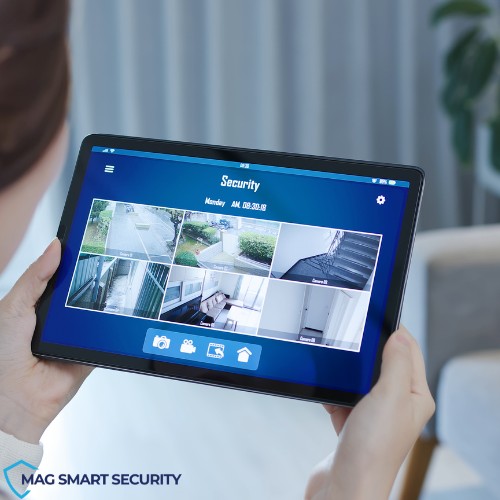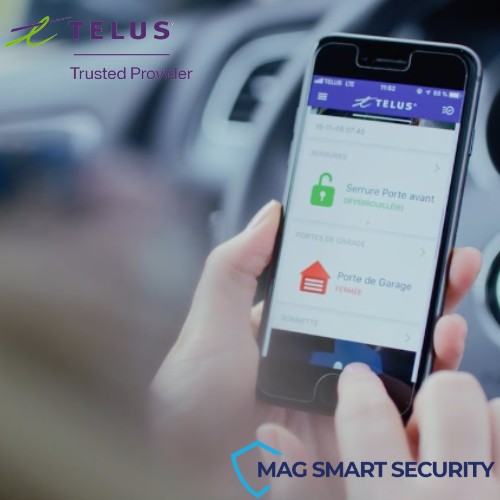Smart homes are getting more connected with different advanced devices. These gadgets, equipped with cameras and microphones, observe and sense activities in private spaces like our homes.
The important question is: can we rely on these devices to handle and secure ourselves from security threats?
When searching for “smart home installation near me” companies, make sure that they will help you get a solid start with integrating smart devices while tackling the cybersecurity risks that come along.
Impact of Cybersecurity Breaches on Smart Homes
While new Internet of Things (IoT) gadgets bring added convenience, each opens the door to potential cybersecurity issues. Recent years have seen troubling attacks on connected devices, from spying on families through baby monitors to setting smart thermostats to dangerous temperatures.
These attacks happen due to weak security measures, like encryption problems, not updating security features, or incorrectly storing user data and passwords. The concern is that a breach in one device can give attackers control over the whole network, affecting other connected devices.
A report by Trend Micro in 2019 explained how accessing one part of a smart home, like an automation server, could allow hackers to control other devices in the home. For instance, they could open smart door locks at a specific time or bypass voice authentication on smart speakers.
What makes these attacks even scarier is that they might not need complex methods but can exploit simple things like easily guessed passwords.
Below is a simplified chart of cybersecurity breaches in smart homes:
| Physical Security Risks | Financial Implications | Reputational Damage |
| Unauthorized access to homeManipulation of security systemsPotential harm to residents | Loss of funds due to fraudulent activitiesCosts associated with system restorationLegal fees for addressing security breaches | Loss of trust from residents and usersNegative publicity and media attentionDiminished market confidence in smart devices |
Types of Cybersecurity Threats
| Types of Cybersecurity Threats | Description | Examples |
| Unauthorized Access | ||
| Hacking into Smart Home Devices | Unauthorized individuals attempt to breach the security of smart home devices for malicious purposes. | Exploiting vulnerabilities in a smart door lock. |
| Exploiting Weak Passwords | Weak or easily guessable passwords provide easy access to unauthorized data on smart devices. | Using common or easily guessable passwords. |
| Data Interception | ||
| Man-in-the-Middle Attacks | Cybercriminals intercept communication between smart devices, potentially leading to unauthorized access or manipulation of exchanged information. | Intercepting signals between a smart thermostat and a mobile app to alter temperature settings. |
| Eavesdropping on Smart Home Communication | Cybercriminals listen in on communication between smart devices to gather sensitive information. | Eavesdropping on conversations captured by smart home security cameras or voice-activated assistants. |
| Device Tampering | ||
| Physical Tampering with Smart Devices | Physical access to smart devices allows tampering, such as turning off security features or manipulating physical components. | Physically tampering with a smart security camera to turn off its recording capabilities. |
| Firmware Modifications | Attackers modify the firmware of smart devices, altering functionalities and introducing security vulnerabilities. | Modifying the firmware of a smart lighting system to disrupt its operation or enable unauthorized control. |
Common Vulnerabilities in Smart Home Devices
Lack of Regular Software Updates
Illegitimate software and firmware updates pose a significant risk for initiating attacks on smart devices. Industries such as healthcare or energy are highly susceptible to this threat. To ensure the security of firmware and software updates, control access to these updates and confirm their source and integrity.
Insecure Interfaces and APIs
The safety of the smart system might be at risk due to weaknesses in software dependencies or older systems. When manufacturers use open-source parts to construct smart devices, it forms a complicated supply chain that’s hard to monitor. These parts could have weaknesses that attackers know, making the threat landscape broader and more susceptible to exploitation.
Default Credentials and Lack of Authentication
Many smart devices gather personal information that must be securely stored and processed to adhere to privacy regulations like GDPR or CCPA. This information can range from medical data to power usage and driving habits. If proper security is not in place, it risks user privacy and can lead to legal consequences.
Inadequate Encryption Practices
Lacking proper encryption practices puts the data exchanged between smart devices at risk. This makes it susceptible to interception and misuse by malicious individuals. Without adequate encryption, sensitive details such as security codes or personal conversations become vulnerable to unauthorized access.
Privacy Concerns in Smart Homes
Collection and Storage of Sensitive Data
Smart home devices routinely gather and store sensitive information. Thus prompting concerns regarding managing this data and determining who has access to it. This includes user preferences, schedules, and potentially sensitive audio or video recordings.
Sharing of Data with Third Parties
Certain smart home devices collaborate with third-party services to enhance their functionality. While this can result in improved features, it introduces privacy considerations regarding handling user information. Users may question how their data is stored and whether it is shared with external entities.
Risks of Unintended Data Exposure
If your primary internet account controls your home network, it’s not just the data from your IoT devices that is at risk. Any vulnerability could compromise your sensitive information, including emails, social media accounts, and bank accounts.
Since many users manage their smart homes through smartphones, which serve as valuable databases, these devices become a significant target for potential hacking. This poses a substantial risk if your phone is hacked or stolen or someone intercepts your connection.
Protective Measures and Best Practices
Achieving 100% security in technology, particularly in smart homes, is challenging. Nevertheless, enhancing the security of smart homes is feasible through a comprehensive and layered approach to cybersecurity. To secure a smart home network, several proactive steps can be taken:
Strong Password Policies
- Change default passwords on all smart home devices.
- Set a unique password for your Wi-Fi network.
- Enable WPA2/WPA3 encryption to thwart unauthorized access to your network and devices.
Regular Software Updates and Patch Management
- Regularly check for and apply updates to devices and network equipment, as updates often include security patches addressing known vulnerabilities.
Implementation of Encryption Protocols
- Employ strong encryption protocols to secure communication between devices and protect sensitive data.
Network Security Measures (Firewalls, Intrusion Detection Systems)
- Install a firewall to monitor and regulate incoming and outgoing traffic, blocking unauthorized access attempts.
- Install antivirus software on devices to identify and eliminate any malware or viruses on the network.
Two-Factor Authentication
- Create distinct network segments for devices handling sensitive data or controlling critical functions (e.g., security cameras, door locks). This minimizes the impact of potential security breaches.
Device and Network Monitoring
- Turn off unnecessary features on smart home devices, such as remote access or voice control, to reduce the network’s attack surface.
- Utilize network monitoring tools to identify suspicious activity, such as unusual traffic or unauthorized access attempts.
Industry Standards and Regulations
Canada has three provinces (Alberta, British Columbia, and Quebec) with comparable legislative obligations and varying security requirements levels. Within Canada, a legal and regulatory framework oversees data protection and cybersecurity.
Organizations should routinely assess their current cybersecurity status, encompassing an examination of the following aspects:
- Identification of entities and items connected to their systems and networks.
- Evaluation of the software and processes running on their systems and networks.
- Verify the presence of technology to prevent most breaches, swiftly detect any that occur, and mitigate the resulting damage (e.g., automatic shutdown in case of detected data leaks).
In Canada, cybersecurity necessitates a multi-disciplinary approach involving insights from various experts. Although this initial investment demands time and resources, organizations failing to actively tackle cyber risk could face severe reputation, finances, and legal implications following a data breach.
Future Trends in Smart Home Cybersecurity
Smart homes, adorned with Internet of Things (IoT) technology, are rapidly gaining favour for their blend of convenience, comfort, and security.
In Canada, 20% of broadband households own a remotely monitored internet-connected device, with 14% embracing smart home devices.
Leading tech giants are contributing to the industry’s evolution, introducing innovative solutions to capture a share in this competitive market. Some of these are:
- Cameras and Video Analytics
- Connected Bathrooms
- Product Integration Across Brands
- Gimdow’s “peel and stick” smart lock
- Invisible smart locks

Get Protected with Reliable Smart Home Security
Keeping connected smart network is more important than ever. To enjoy the benefits of smart devices, focus on protecting against cybersecurity threats. As technology advances, strong security isn’t just a choice – it’s a must.
Invest in reliable smart home installation services near me, like MAG Security will make your home safer. You protect your home and help make the smart home industry even safer. Contact us now for your smart security needs.
Frequently Asked Questions
What Types of Cybersecurity Threats Exist for Smart Homes?
Common threats include unauthorized access, data interception, and device tampering. These can lead to privacy breaches, data exposure, and even compromise the home’s physical security.
How Do Hackers Gain Unauthorized Access to Smart Home Devices?
Hackers exploit weak passwords or security loopholes in the device’s software. They may also use techniques like phishing or malware attacks to gain control of the smart home network.
What is Data Interception, and How Does it Affect Smart Homes?
Data interception involves capturing and manipulating data as it travels between devices. This can result in unauthorized access to important information and compromise the privacy of smart home residents.






